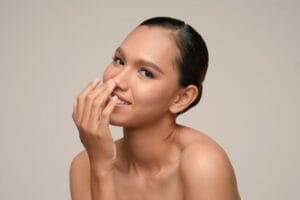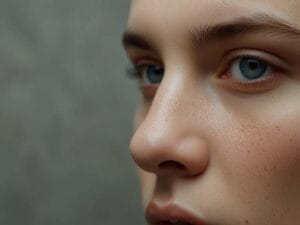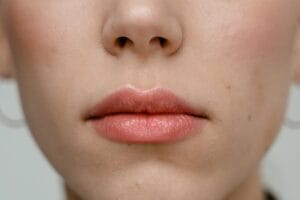Revision Rhinoplasty: What You Need to Know Before Your Second Surgery
Revision rhinoplasty is a secondary nose surgery that surgeons perform to correct or improve results from a previous rhinoplasty procedure. It addresses functional issues like breathing problems, aesthetic concerns such as asymmetry or over-correction, or complications that developed after the initial surgery. Unlike primary rhinoplasty, revision procedures often involve working with scar tissue and altered nasal anatomy, making them generally more complex and requiring specialized expertise.
Sarah had her first rhinoplasty five years ago. The results weren’t terrible, but something felt off. The tip looked slightly crooked, and breathing through her right nostril had become increasingly difficult. She’d been putting off doing anything about it—partly because the idea of going through surgery again felt overwhelming, and partly because she wasn’t sure if her concerns were even valid enough to warrant another procedure.
That’s where many people find themselves when considering revision rhinoplasty. It’s not just about aesthetics, though that’s often part of it. Sometimes it’s functional issues that develop over time, or complications from the initial surgery that only become apparent months or years later. Whatever the reason, the decision to pursue a second nose surgery is complex, and the process itself is more nuanced than most people realize.
Understanding Revision Rhinoplasty: When and Why It’s Needed
Revision rhinoplasty isn’t just a cosmetic do-over. In many cases, it’s a necessary procedure to address real problems—whether those are functional, aesthetic, or both. The reasons people seek revision rhinoplasty vary widely, but they typically fall into a few key categories.
Functional issues are probably the most straightforward reason. If your breathing has worsened after the initial surgery, or if you’re experiencing nasal obstruction that wasn’t there before, that’s a legitimate medical concern. Sometimes this happens because the original procedure altered the internal nasal structures in ways that created obstructions. Other times, complications during healing arose that the medical team didn’t address properly.
Common Functional Problems After Primary Rhinoplasty
Breathing difficulties can stem from several sources. Collapsed nasal valves—the narrowest part of the nasal airway—are a frequent culprit. This can happen if the surgeon removed too much cartilage during the initial procedure, or if they didn’t maintain the structural support properly. Septal deviations that the surgeon didn’t fully correct the first time around can also cause ongoing issues.
Then there’s the aesthetic side. Some people are unhappy with how their nose looks after the first surgery. Maybe it’s too small, or too large. The tip might be over-rotated, creating that “pig nose” appearance. Or there could be asymmetry that wasn’t there before. Sometimes the problem is subtle—the nose looks fine from most angles, but there’s something about the profile that doesn’t quite work.
Complications from the initial surgery represent another category. These can include things like infection, poor healing, or issues with graft materials. In rare cases, there might be problems with the surgical technique itself that need correction.
Timing Matters: When to Consider Revision Rhinoplasty
Here’s something many patients don’t realize: timing is crucial. Most surgeons will tell you to wait at least a year after your primary rhinoplasty before even considering a revision. That’s because the nose takes a full year—sometimes longer—to fully heal and settle into its final shape.
During those first 12 months, there’s significant swelling that can mask the true results. What looks like a problem at three months might resolve itself by month nine. That’s why jumping into a revision too early can be a mistake. You might end up fixing something that would have corrected itself naturally.
But there are exceptions. If you’re experiencing significant breathing problems or other functional issues, your surgeon might need to address those sooner. The key is working with a surgeon who can assess whether waiting is safe or if intervention is necessary.
What Makes Revision Rhinoplasty Different from Primary Surgery
If you’re thinking revision rhinoplasty is just like doing the first surgery again, you’re in for a surprise. Secondary procedures are almost always more complex, and they require a different skill set from your surgeon.
The Challenge of Scar Tissue
One of the biggest differences is scar tissue. After your first surgery, your body forms internal scar tissue that can make the nasal structures less pliable and more difficult to work with. This scar tissue can distort the anatomy, making it harder for the surgeon to predict how the nose will respond to changes.
In some cases, there’s also less cartilage available for reconstruction. If the surgeon removed significant cartilage during the primary procedure, the revision surgeon might need to harvest cartilage from other areas—often the ear or rib—to rebuild structures properly.
Altered Anatomy Complicates Matters
The previous surgery has already changed the nasal anatomy, which means the surgeon is working with a modified structure rather than a natural one. This requires a deep understanding of how the previous surgery altered things, and how to work with—or around—those changes.
That’s why choosing the right surgeon is so critical for revision rhinoplasty. You want someone who specializes in revisions, not just someone who does primary rhinoplasties. The complexity level is different, and the techniques required are often more advanced.
Choosing the Right Surgeon for Your Revision Rhinoplasty
This is probably the most important decision you’ll make. Not all plastic surgeons are equipped to handle revision rhinoplasty cases effectively. You need someone with specific experience and expertise in secondary procedures.
What to Look for in a Revision Rhinoplasty Surgeon
First, look for board certification in either plastic surgery or facial plastic surgery. But that’s just the baseline. You want someone who does a significant portion of their practice as revisions—not just someone who occasionally takes on a revision case.
Ask to see before-and-after photos specifically of revision cases. Primary rhinoplasty results don’t tell you much about how they handle revisions. You want to see examples of noses that surgeons corrected after previous surgeries, because those demonstrate the skill level you need.
Experience matters, but it’s not just about years in practice. It’s about volume of revision cases. A surgeon who does 50 revisions a year is going to have more relevant experience than someone who’s been practicing for 20 years but only does a handful of revisions annually.
Questions to Ask During Your Consultation
Come prepared with specific questions. How many revision rhinoplasty procedures do you perform each year? What’s your revision rate? (A surgeon who’s honest about having some revisions in their own practice is often more trustworthy than one who claims they never have problems.)
Ask about their approach to your specific concerns. Do they have experience addressing the particular issues you’re facing? What techniques do they use? Will they need to harvest cartilage grafts, and if so, from where?
It’s also worth asking about their revision policy. If you’re not happy with the results of the revision, what are your options? Some surgeons offer free or discounted revisions within a certain timeframe, though you should understand that there are limits to what can be done.
The Revision Rhinoplasty Procedure: What to Expect
Every revision rhinoplasty is different because every case is unique. But there are some common elements you can expect, and understanding the process can help you prepare both mentally and practically.
Preoperative Planning and Assessment
Before the surgery, your surgeon will need to thoroughly assess your nose. This usually involves detailed imaging—often 3D imaging—to understand the current structure and plan the changes. They’ll also review your medical history, including details about your previous surgery.
One thing that’s different from primary rhinoplasty: your surgeon might need to see your operative notes from the first procedure. These can provide valuable information about what the previous surgeon did initially, what materials they used, and what complications might have occurred.
Anesthesia and Surgical Approach
Surgeons can perform revision rhinoplasty under either general anesthesia or local anesthesia with sedation, depending on the complexity of the case. More extensive revisions typically require general anesthesia.
The surgical approach—whether open or closed—depends on what needs to be done. Open rhinoplasty, where the surgeon makes a small incision across the columella (the strip of skin between the nostrils), gives the surgeon better visibility and access. Surgeons often prefer this for revisions because there’s usually more work to do internally.
Surgeons might use closed rhinoplasty, where all incisions are inside the nostrils, for more minor revisions. But for complex cases, the open approach typically works more effectively.
Common Techniques in Revision Rhinoplasty
Depending on what needs to be corrected, your surgeon might use various techniques. Cartilage grafting is common—adding structural support where the previous surgery removed or lost it. This might involve harvesting cartilage from your septum, ear, or rib.
Surgeons often need to remove scar tissue to restore proper nasal function and appearance. This can be tricky because they need to remove enough to allow proper function, but not so much that they destabilize the structure.
Surgeons might need to perform structural reconstruction if the nasal framework weakened or altered in ways that affect both function and appearance. This is where an experienced revision surgeon’s expertise really matters.
Recovery After Revision Rhinoplasty: What’s Different
Recovery from revision rhinoplasty is generally similar to primary rhinoplasty, but there are some differences. The swelling might be more persistent, and the healing process can take longer because you’re working with tissue that previous surgery has already altered.
Initial Recovery Period
The first week is typically the most uncomfortable. You’ll have a splint on your nose, and your surgeon might place packing inside your nostrils—though many surgeons now use dissolvable packing or forego it entirely. Expect significant swelling and bruising, especially around your eyes.
Most people can return to work within a week or two, depending on their job and how they’re feeling. But you’ll still look like you’ve had surgery—the bruising and swelling will be visible for a while.
Long-Term Healing
Here’s where revision rhinoplasty differs: the final results can take longer to become apparent. While most of the swelling resolves within the first few months, subtle changes continue for a year or more. Some patients report that their nose continues to refine even into the second year.
That patience is important. It’s tempting to judge the results too early, but just like with primary rhinoplasty, you need to give it time. The nose goes through multiple phases of healing, and what you see at three months isn’t necessarily what you’ll see at twelve months.
Costs and Considerations for Revision Rhinoplasty
Revision rhinoplasty is typically more expensive than primary rhinoplasty, and there are several reasons for that. The complexity is greater, the surgery often takes longer, and it requires more specialized expertise.
Understanding the Cost Factors
Most revision rhinoplasty procedures cost between $8,000 and $15,000, though complex cases can exceed that. The price depends on several factors: the surgeon’s experience and reputation, the geographic location, the complexity of your case, and whether your surgeon needs additional procedures—like cartilage harvesting.
Insurance coverage is tricky. If the revision is purely cosmetic, insurance typically won’t cover it. But if there are functional issues—breathing problems, for example—insurance might cover some portion. It’s worth discussing this with both your surgeon and your insurance company.
Realistic Expectations
This is crucial: revision rhinoplasty can improve your results significantly, but it’s not always possible to achieve perfection. There are limitations based on what the previous surgeon did, the amount of available tissue, and the extent of scarring.
A good surgeon will be honest about what’s realistic for your specific case. They’ll explain what they can improve and what might have limitations. That transparency is important—you don’t want to go through another surgery only to be disappointed because the surgeon didn’t manage expectations properly.
Risks and Complications of Revision Rhinoplasty
Like any surgery, revision rhinoplasty carries risks. But because you’re working with already-altered tissue, some risks are higher than with primary procedures.
Infection is always a possibility, though it’s relatively rare with proper care. More concerning is the risk of further compromising nasal function if the surgeon doesn’t perform the revision carefully. That’s why choosing an experienced surgeon is so critical.
There’s also the possibility that you might not be satisfied with the results. Revisions can improve things, but they can’t always achieve everything you hoped for. Understanding this going in helps manage expectations.
Some patients worry about the “revision spiral”—the idea that once you have one revision, you’ll need another, and another. While it’s true that some people do have multiple revisions, it’s not inevitable. Working with an experienced surgeon and having realistic expectations can help avoid that cycle.
When Revision Rhinoplasty Might Not Be the Answer
Not everyone is a good candidate for revision rhinoplasty. Sometimes the risks outweigh the potential benefits, or the desired changes simply aren’t achievable.
If there’s extensive scarring or tissue loss, surgeons might not have enough healthy tissue to work with. In those cases, additional surgery might make things worse rather than better.
Some aesthetic concerns might be too minor to warrant the cost and recovery time of another surgery. If the issues are very subtle, non-surgical options—like injectable fillers—might be more appropriate.
And sometimes, the timing just isn’t right. If you’re not fully healed from the first surgery, or if you have other health concerns that you need to address first, it’s better to wait.
Alternatives to Revision Rhinoplasty
Before deciding on another surgery, it’s worth exploring other options. Non-surgical rhinoplasty using injectable fillers can address some minor aesthetic concerns. This is temporary—fillers last 6-18 months typically—but it can be a good way to test out changes without committing to surgery.
For breathing issues, sometimes less invasive procedures can help. Surgeons might address functional problems with septoplasty or turbinate reduction without performing a full revision rhinoplasty.
The key is having a thorough consultation where you and your surgeon discuss all options. A good surgeon will present alternatives when appropriate, not just push for surgery.
Making Your Decision About Revision Rhinoplasty
Deciding whether to pursue revision rhinoplasty is deeply personal. It involves weighing the potential benefits against the costs, risks, and recovery time. There’s no one-size-fits-all answer.
If you’re considering it, start by getting multiple consultations. Different surgeons might have different approaches, and hearing various perspectives can help you make an informed decision. Ask lots of questions, review before-and-after photos, and trust your instincts about whether a particular surgeon fits your needs.
Consider your motivations carefully. Are you addressing real functional problems, or purely aesthetic concerns? How significant are the issues you’re facing? Are they things you notice every time you look in the mirror, or are they more subtle?
And be honest about your expectations. Revision rhinoplasty can achieve remarkable improvements, but it’s not magic. Understanding what’s realistic for your specific situation is crucial to making a decision that will satisfy you long-term.
Remember, you don’t have to rush this decision. Take the time you need to research, consult with surgeons, and think through all the factors. When you find the right surgeon and the timing feels right, you’ll know. Until then, there’s no harm in waiting and gathering information.













